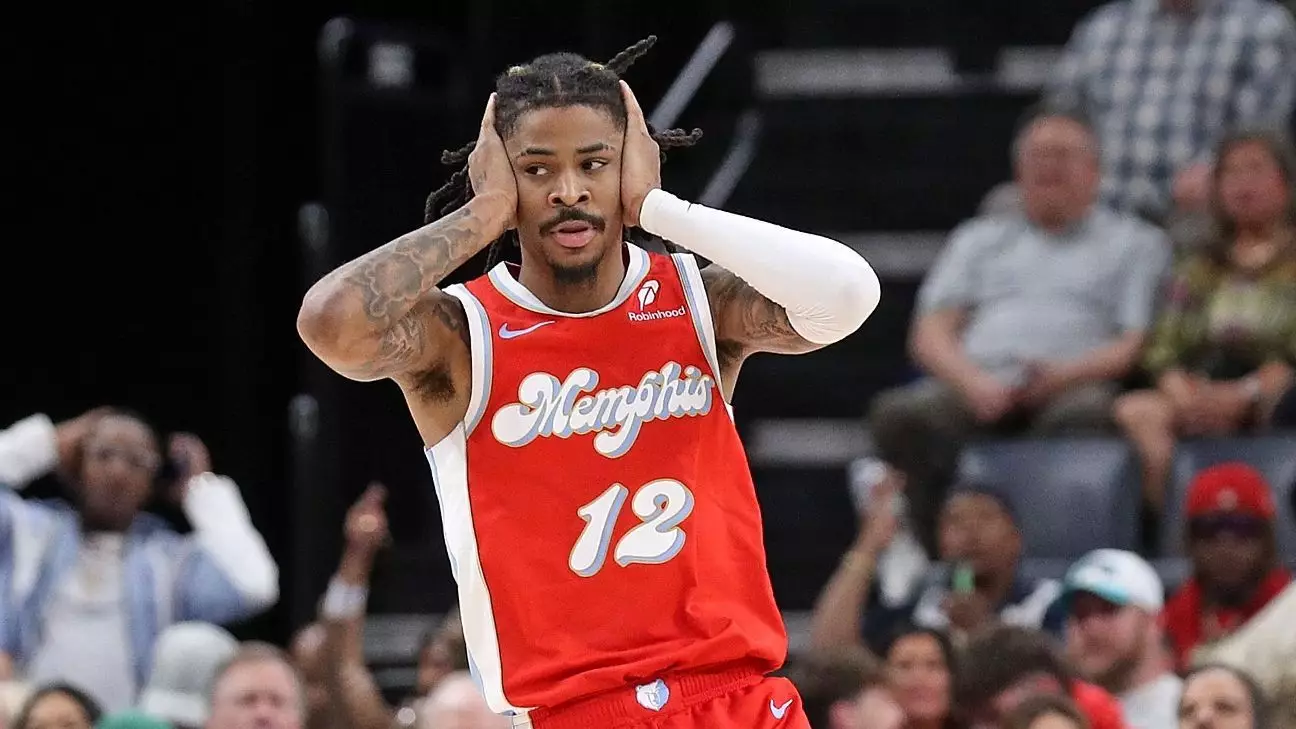Ja Morant, the electrifying star of the Memphis Grizzlies, is certainly no stranger to controversy. His latest foray into the world of celebrations has taken an unexpected turn; after suffering a hefty fine of $75,000 for mimicking an imaginary gun gesture, he has opted to delineate a new, albeit provocative, way to celebrate scoring from beyond the arc. The transition from aiming a make-believe firearm to tossing an invisible grenade is both surprising and telling about Morant’s current mindset and public image.
While it may appear to be just a fun gimmick, it speaks volumes about the precarious balance athletes must maintain in their public lives. In Morant’s case, his shift to a grenade-throwing persona seems to be a cutesy way to dodge scrutiny following multiple run-ins with league regulations regarding his seemingly reckless behavior surrounding firearms. This deeper context transforms what could be seen as mere antics into a reflection of youthful recklessness tinged with the pressure of public opinion.
The Impact of Public Perception
Morant’s decision to adopt this new celebration isn’t solely a personal choice; it’s an attempt to navigate a precarious situation that has some people concerned for his future. After all, the scrutiny he has faced extends beyond fines; there are lasting implications. He was previously suspended for 25 games for waving a gun in a video, which leaves fans and analysts alike wondering how he reconciles these actions with the responsibility that comes from being a high-profile athlete.
His teammate, Vince Williams Jr., remarked on the practicality of this shift, on the surface framing it as a smart financial move. Williams said, “It’s good for him; he gets to save his money.” However, one must ask if the priority should be on monetary conservation or on making choices that establish a positive and respectful public persona. Are celebrations meant to be reflective of character, or are they merely for entertainment?
Critique from Analysts and Fans
While some may chuckle at Morant’s grenade toss as a harmless revelry, criticism quickly emerged from various quarters, including the TNT studio crew. Their feedback forces one to interrogate the role of sports in larger societal issues. Does a celebration that mimics violence, even in jest, trivialize serious themes surrounding gun culture?
Instead of showcasing sportsmanship and skill, Morant’s gesture perpetuates a problematic narrative. Onlookers are left pondering whether this shift indicates a player pushing the boundaries of acceptable behavior or a desperate grasp for attention amid a storm of criticism. This brings to light a critical conversation: the responsibility of athletes to recognize the power of their influences—particularly to younger fans who idolize them.
Ja Morant’s intriguing yet contentious journey highlights the blurred lines between playful celebrations and the cultural ramifications they can engender. As he navigates his public image through such antics, one must wonder: is he simply a young athlete celebrating his talent or a controversial figure unconsciously echoing themes of violence? The answer is complex and undoubtedly fuels ongoing discussions surrounding athlete behavior and public expectation.


Leave a Reply